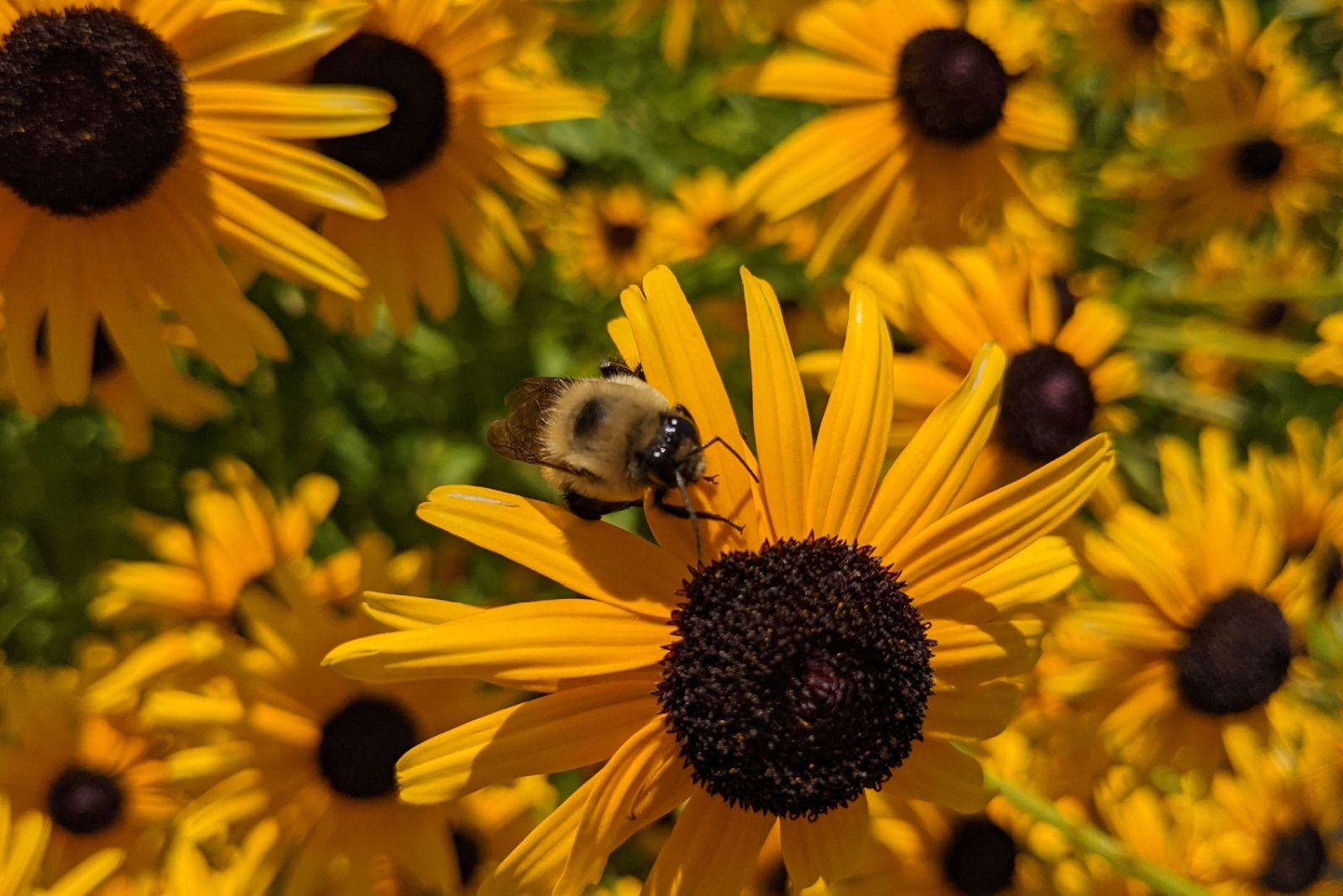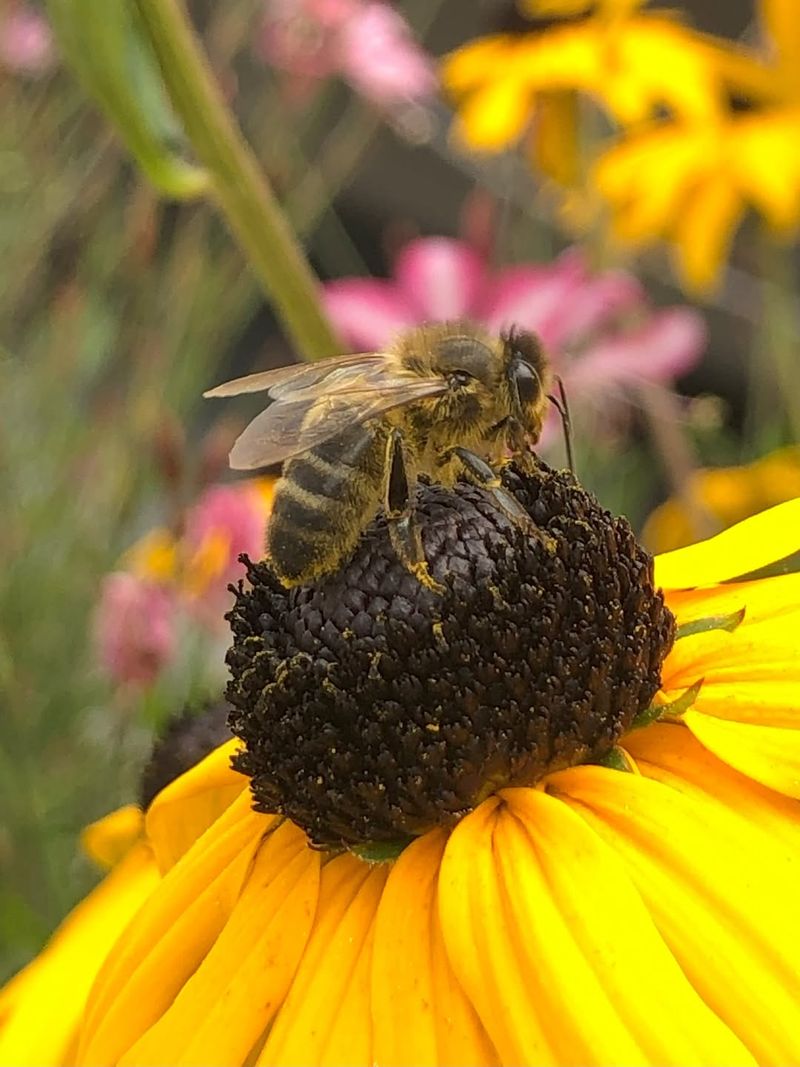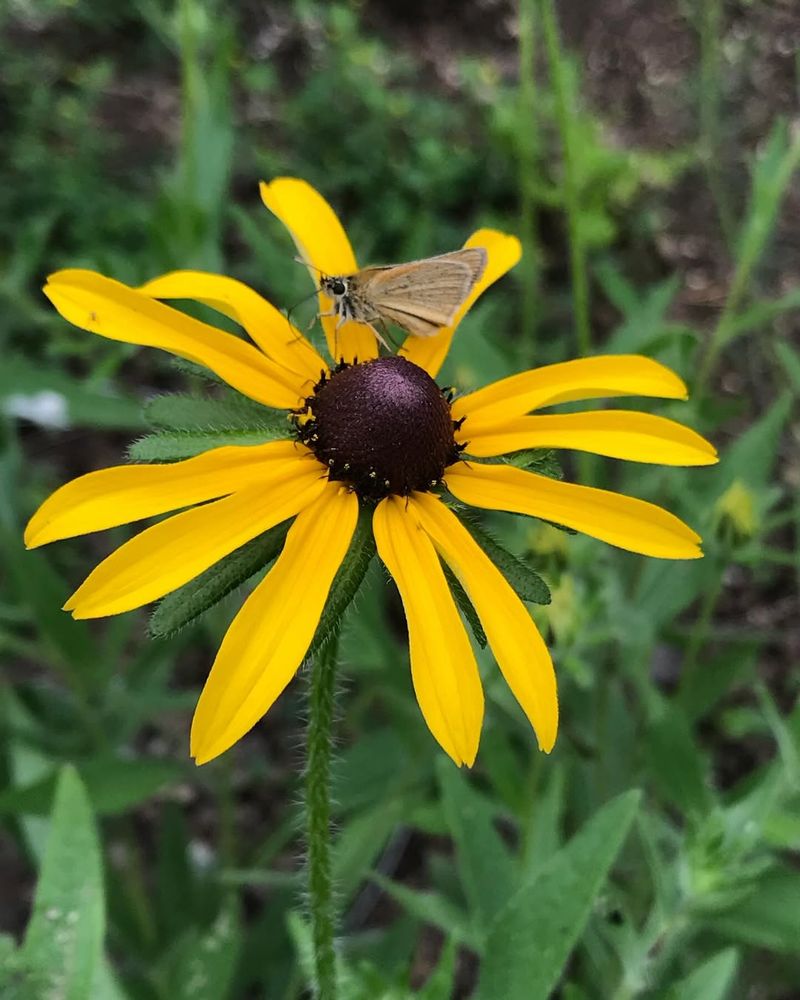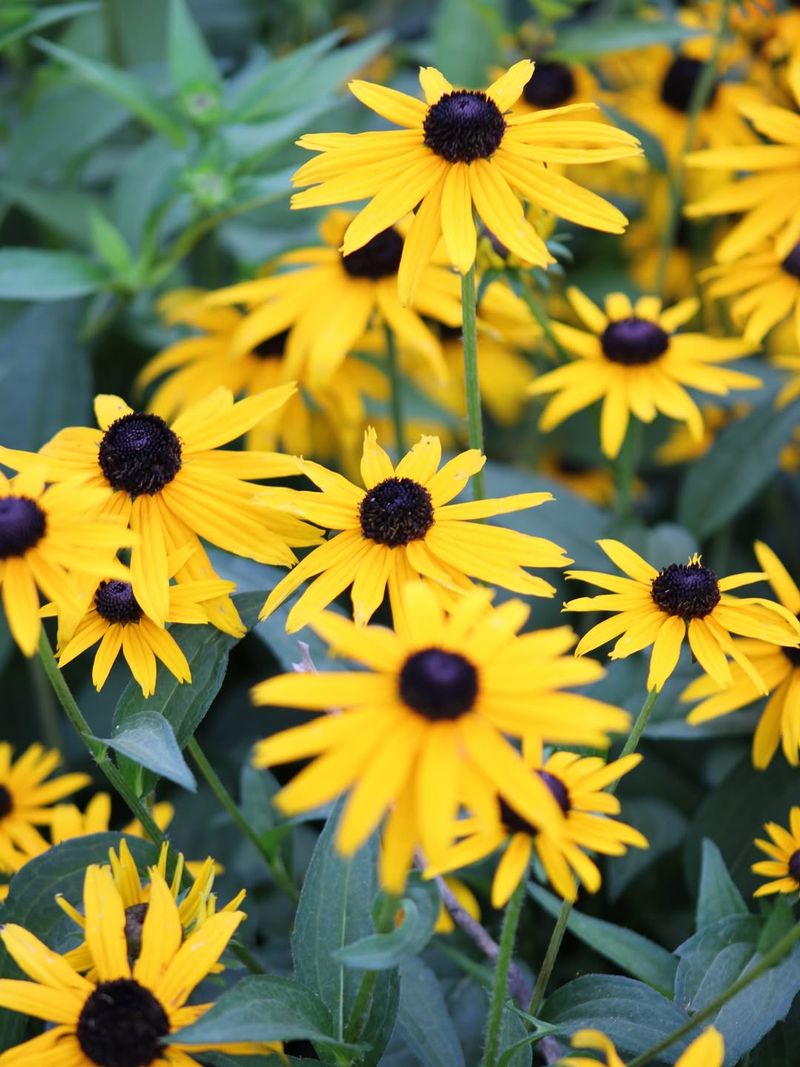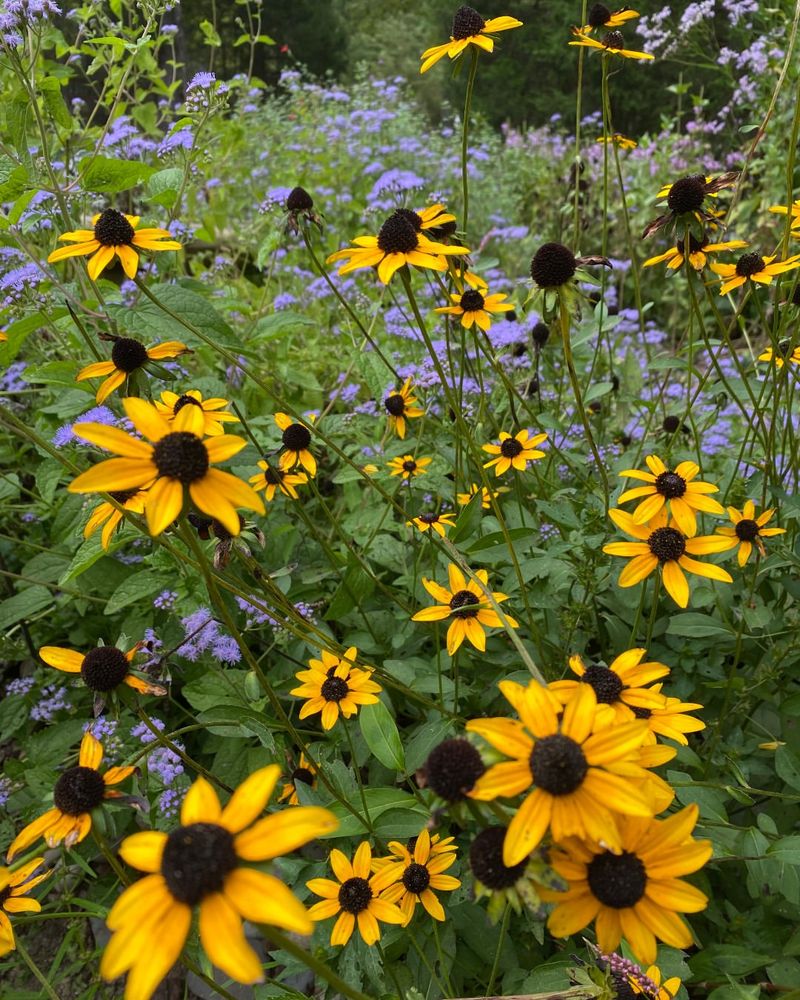Maryland’s state flower, the Black-Eyed Susan, has become a buzzing hotspot for bees this season. These cheerful yellow blooms are popping up everywhere, and pollinators can’t seem to get enough of them.
Understanding what makes these flowers so irresistible to bees helps us appreciate nature’s perfect partnerships and shows us how to create gardens that support our essential pollinator friends.
1. Bright Yellow Petals Act Like Bee Magnets
Bees see colors differently than humans do, and yellow stands out brilliantly in their vision. Black-Eyed Susans glow like neon signs to flying pollinators, making them impossible to miss from far away.
The vibrant golden petals create a landing pad that bees recognize instantly. This natural beacon system works perfectly during Maryland’s sunny summer days when bees are most active and searching for food sources.
Gardens filled with these flowers become favorite destinations for hungry bee colonies throughout the neighborhood.
2. Abundant Nectar Supply Keeps Bees Coming Back
Each Black-Eyed Susan produces generous amounts of sweet nectar that bees absolutely love. Unlike some flowers that offer only tiny rewards, these blooms provide substantial energy for hardworking pollinators.
The nectar quality remains excellent throughout the flowering season, giving bees a reliable food source they can depend on. Bees communicate with their hive mates about productive flower locations, so once they discover these plants, entire colonies visit regularly.
This consistency makes Black-Eyed Susans essential for bee nutrition during Maryland summers.
3. Pollen-Rich Centers Provide Essential Protein
That dark brown center you see on every Black-Eyed Susan? It’s packed with protein-rich pollen that bees need to feed their young.
Worker bees collect this golden dust and carry it back in special pouches on their legs. The pollen from these flowers contains nutrients that help bee larvae grow strong and healthy, making it incredibly valuable for colony survival.
Maryland’s bees instinctively know which flowers offer the best pollen quality, and Black-Eyed Susans rank at the top of their shopping list.
4. Long Blooming Season Means Constant Food Availability
From early summer through fall, Black-Eyed Susans keep producing fresh flowers when other plants have finished blooming. This extended flowering period creates a reliable cafeteria for bees across multiple months.
Many wildflowers bloom briefly and disappear, but these persistent plants keep opening new blossoms week after week. Bees face serious challenges finding food during late summer, making this extended availability absolutely crucial for their survival.
Maryland gardeners who plant these flowers essentially provide an all-season buffet.
5. Easy Landing Platform Design
The flat, open face of a Black-Eyed Susan gives bees a comfortable place to land and work. Unlike tubular flowers that require special techniques, these blooms welcome pollinators of all sizes and abilities.
Bees can walk across the center disk easily, accessing nectar and pollen from multiple angles without struggling. This user-friendly design means bees spend less energy per visit and can feed more efficiently.
Young, inexperienced bees particularly appreciate flowers that don’t require advanced flying skills or complicated navigation.
6. Native Plant Status Means Perfect Bee Compatibility
Black-Eyed Susans evolved alongside Maryland’s native bee species for thousands of years, creating perfect partnerships. Local bees have developed specialized behaviors specifically for harvesting from these familiar flowers.
Native plants and native pollinators fit together like puzzle pieces, with timing, nutrition, and physical features all matching beautifully. Introduced ornamental flowers often lack the chemical signals and nutritional profiles that local bees recognize and need.
Choosing native plants like Black-Eyed Susans supports the entire ecosystem more effectively than exotic alternatives.
7. Clustering Growth Pattern Creates Efficient Foraging
Black-Eyed Susans naturally grow in groups rather than spreading out individually across the landscape. This clustering behavior lets bees visit dozens of flowers without flying long distances between each one.
Efficiency matters tremendously to bees because flight burns enormous amounts of energy. When flowers grow close together, pollinators can fill their pollen baskets and honey stomachs much faster.
Smart gardeners mimic this natural pattern by planting Black-Eyed Susans in clusters, creating concentrated feeding stations that bees absolutely adore visiting repeatedly.
8. Thrives In Maryland’s Climate Without Extra Care
These tough flowers handle Maryland’s hot, humid summers and occasional droughts without wilting or stopping their bloom production. Healthy, stress-free plants produce more nectar and pollen, making them more attractive to bees.
Gardeners don’t need pesticides, constant watering, or special fertilizers to keep Black-Eyed Susans looking gorgeous. This low-maintenance nature means more flowers survive and thrive, creating larger bee populations throughout neighborhoods.
When plants and climate match perfectly, everybody wins—especially the pollinators searching for consistent food sources.

